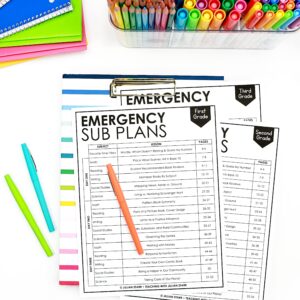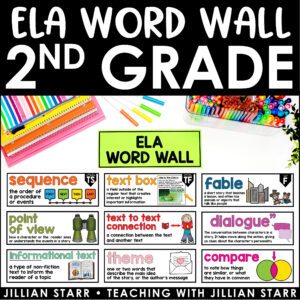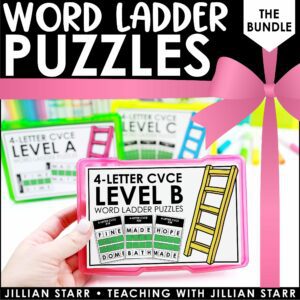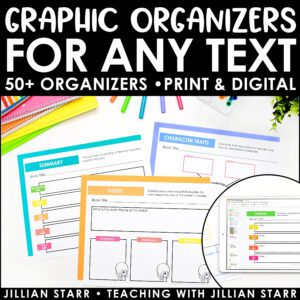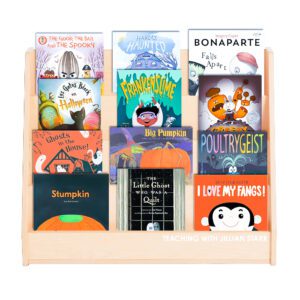
Building community and student confidence through shared common experiences is a vital part of our classroom. Opportunities for shared reading check all the boxes. And bonus, students love it!
Our students benefit in so many ways from regular shared reading experiences. When we incorporate shared reading into our days, our students:
- Take new risks with reading as part of the group
- Engage a wide range of learners
- Practice reading fluently
- Encounter and read new vocabulary
- Explore reading with expression
- Practice phonics concept
- Reinforce reading strategies
- Common reading experience shared by a group of students
The list goes on! And yet, how can we possibly fit one more thing into each day? Well friend, I’ve done the work for you and found some quick and easy ways you can work shared reading into each part of your day.
Morning Meeting
Since we do Morning Meeting every day, we have so many opportunities for shared reading within these routines. My students look forward to this time each day to learn about our day, connect with peers, and do fun activities together.
Morning Message & Schedule
Even before our meeting starts, students flock to our schedule and morning message to preview the day. These daily check-ins make a perfect opportunity for shared reading. Each day, we read the message as a class, sometimes mixing it up with a fancy pointer or a fun question. In our message, I include details about the day ahead and questions to get us thinking about upcoming learning. Our message follows a consistent pattern so it’s easy for all students to follow along, and as the year progresses, I incorporate more varied sentence structure and ideas into the message.
Following the morning message, we take a look at the schedule so that everyone is on the same page about what’s coming up for our day. A visual schedule ensures that all students can access this portion of our morning meeting and use our schedule as a classroom tool. Over time, this daily opportunity for shared reading allows my students to grow more confident in reading and writing the parts of their day. I see this transfer into their writing, and reading of the morning message.
Poem of the Week
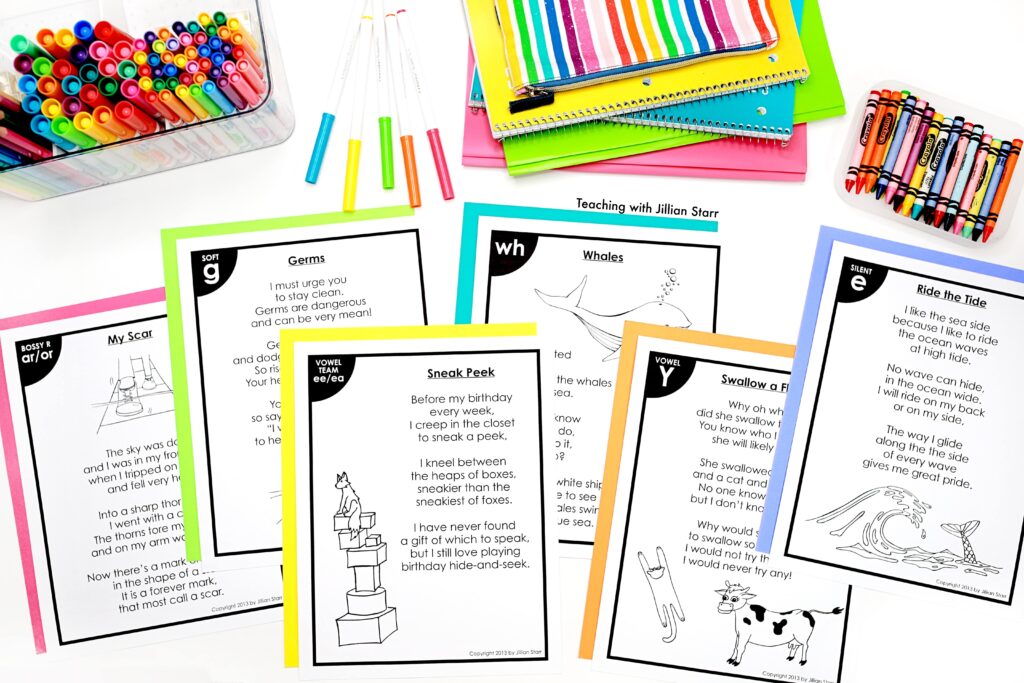
Every Monday morning, our group activity at morning meeting is the Poem of the Week (planning: check!). My students are always so excited to find out what the poem will be each week. I introduce this poem by projecting it on the smartboard and then we work together to find and highlight the words that match the phonics pattern we are working on. We use this shared reading opportunity to read the poem together as a class a few times. This common experience gives students a chance to practice and talk about the same concept before visiting again later in the week during literacy centers. There are so many ways to make this activity extra fun and incorporate all students:
- Choose different students to come up and point out or highlight a word that matches the pattern
- Ask students to come up and point with a fancy pointer as the whole class reads the poem
- Choose an action (like clapping or standing up) that everyone can do when you read a word that matches the phonics pattern
- Make a list of the words that match the phonics pattern (sprinkle in some shared writing, too)
The list goes on (and on! and on!). Poem of the week is one of the easiest and most meaningful opportunities for shared reading in my classroom.
Revisiting Read Alouds
I love to revisit read alouds during morning meetings, especially around holidays, seasons, or new science or social studies units. Using the document camera to put up an especially interesting or funny page from a read-aloud, is a great opportunity for shared reading. Students love seeing their favorite texts again, and I love highlighting vocabulary, dialogue, or repetitive texts.
Literacy Centers
There are so many opportunities for shared reading within the literacy block. Between small group lessons and literacy centers, students can practice reading a variety of texts in a variety of ways.
Shared Reading with the Poem of the Week

My students LOVE reading with a partner! A great starting point for partner reading is something that BOTH partners feel comfortable and confident reading. Since we’ve already read phonics poems at least once at morning meetings, and some students have already engaged with the poem again at Poetry Center, phonics poems make a great text for partners to read together! Students start by finding the phonics pattern words and sight words together. Then they’re ready to read the poem together again and again.
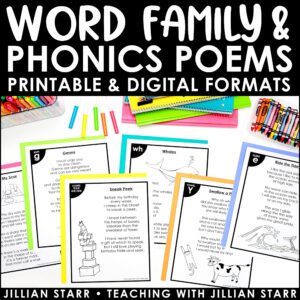
Word Family & Phonics Poems
Big Books & Pointers
How is it that a big book is just so much more exciting than a regular-sized book? I don’t know, but let’s roll with it. This shared reading opportunity is always a highlight of the week. Thanks to Scholastic points and collaborating with colleagues to share books, we’re lucky enough to have access to a few big books. Sometimes, I pull one that’s relevant to the season or something we’re learning in science or social studies. I go through the book early with highlighter tape to highlight sight words or phonics patterns. We might read this book as a whole class or as a small group. Following our shared reading of the book, I leave it out as a choice for partner reading. It makes my teacher heart happy to see students huddled around a big book on the carpet reading together.
And bonus: my students love finding the corresponding regular-sized books in our classroom library or the school library. Now, they’re already familiar with the book, and eager to read it again and again.
Shared Reading in Small Groups
Shared reading happens so often during my targeted small groups. I love reading together in small groups since students are working on a similar skill, so I can really choose a just-right book or passage. I can also choose a book or passage that I know will excite that particular group of kids, which can be so motivating for our reluctant readers. In the small group, there’s less pressure than reading out loud in the whole group. Students feel comfortable taking that risk with the smaller group. I focus our lesson on the phonics pattern or the new vocabulary, and we practice fluency by reading the text multiple times together. Following this shared reading lesson, students are able to keep the book or passage in their book box, and can confidently practice reading it independently in the future.
Unconventional times
There are a few more opportunities for shared reading that may surprise you! I love squeezing some learning into unconventional times. Just because we’ve got a small pocket of time, doesn’t mean it’s a waste. You know those times, I’m talking about- the ten minutes between specials and lunch or that unexpected five minutes when you miraculously get to specials not just on time but early! These times are perfect for a shared reading opportunity!
Snack Time
I love to capitalize on snack time: it is a perfect time to incorporate literacy! Sometimes, I like to share a read-aloud during this time. Other times, snack time works well for a shared reading opportunity. I can describe the shared reading while students begin their snacks and then we dive right in. We can use the document camera to project a page of a favorite read-aloud. We can use the pointer and read out sight words for the week or review and read some visuals from Science or Social Studies.
Waiting in Line
Sometimes, we’ve cleaned-up and lined-up with a few minutes to spare! I know, hard to believe, right? I promise, it really happens once in a blue moon. This is a perfect time to pop that Phonic Poem of the Week up on the smartboard and read it together! I can call on a student or two to lead the poem using the pointer, or multiple students to point out words with the phonics pattern.
Ten Extra Minutes
We all know those times when the class finishes an activity faster than planned, or the assembly is shorter than expected, or we trade prep times with a colleague and end up with a few extra moments. I used to be caught off guard by these pockets of time and wasted it all trying to figure out what to do. That was until I realized that I could use these times as an opportunity for shared reading! With shared reading in my back pocket, I was never left without a back-up plan. I can call the class to carpet and pull up the smartboard and we’re ready to go. Vocabulary, phonics, and fluency practice for the win!
I hope you’ve found a few more ways to add shared reading into your day! What are your favorite ways to incorporate shared reading into your schedule? Let me know in the comments.

